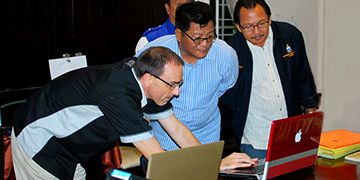You can host your dictionary at webonary.work. If you nevertheless decide to set up the Webonary Plugin on your own webserver, follow the steps below.
If this sounds like more work than you ever wanted to do on a website, you may want to find someone familiar with WordPress to help you out. Happily, millions of people all over the world know WordPress, including a number of them within SIL (the developers of Webonary).
To set up a dictionary for your language:
- Figure out what copyright or licensing you want on the site. For instance, a number of Vanuatu dictionaries use the Creative Commons Attribution-Noncommercial-Share Alike 3.0 License. (The notice can be found at the bottom of the page in any of the dictionaries.)
- Register a domain name, such as "OurDictionary.com". A company such as Host Gator can do that for you.
- Find an organization or company that can "host" or run your website. This can be tricky, because you will need to find a host that allows you the adjust php.ini to enable the import of large xhtml-files.
- Become familiar with WordPress. The software has some great documentation and is friendly to new people.
- Install WordPress on your site. Some of the better web hosts have utilities that does this relatively easily. For instance, some hosts have cPanel, which is a collection of tools. One of them is called Fantastico. This installs all the software you need to run WordPress on your website. If KKoncepts hosts your site, you will need to find someone to install all of the needed software WordPress needs by hand.
- Download and install the Webonary software. You can find directions on the Download page.
- Prepare your data. For more information, see the page regarding data formats supported.
- Write the informational pages and set up the menus for the site.

 Webonary gives language groups the ability to publish bilingual or multilingual dictionaries on the web with a minimum of technical help.
Webonary gives language groups the ability to publish bilingual or multilingual dictionaries on the web with a minimum of technical help. With lexical data in FLEx, the process is simple: 1.
With lexical data in FLEx, the process is simple: 1. 
